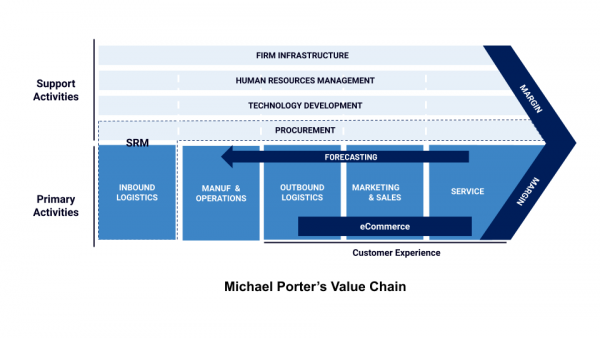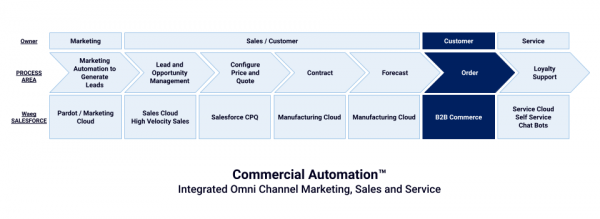Blog Post
Nobody would have been able to predict the events of 2020, and for B2B companies, few were prepared. It was a year that changed everything, including how B2B consumers choose to do business. From researching, purchasing, and connecting with companies, B2B buyers have high expectations of the buying process and purchase products in whatever way is most convenient for them.
Research shows that businesses experienced 10 years’ worth of ecommerce growth in just 3 months. This acceleration of ecommerce sales reflects the rapid change of B2B consumers’ purchasing habits. It also puts pressure on sales teams and distribution partners to catch up to their competition. With an increased need to deliver their brand presence and customer experience digitally, businesses must now use automation to deliver goods seamlessly, quickly, and accurately.
So, what is the right way to capture sales in commerce? In this webinar, Waeg® speakers Wilfrid Williaume, Envision Leader, and Chris Timmerman, Managing Partner, along with Conexiom® President and CEO Ray Grady discuss setting the foundation for the right go-to-market strategy for maximum return and the process for omnichannel success in B2B commerce.
B2B Ecommerce Strategy
65% of B2B brands plan to invest more in ecommerce, and most B2B leaders expect digital sales to make up over 50% of their business in the next two years. It’s clear that B2B ecommerce is rising, and this presents an opportunity for companies to redefine sales representatives’ roles and free their teams from the logistics of order processing.
To do so, B2B businesses need to develop the right B2B ecommerce strategy. Wilfrid Williaume, Envision Leader at Waeg, suggests focusing on three main pillars:
-
What customer segment to target and what ROI modeling?
-
How will your organisation be impacted with ecommerce?
-
How to drive internal and external adoption?
“At Waeg Envision, we work with our customers to define their vision and strategic objectives,” said Williaume. “We identify and prioritise growth opportunities around a specific segment that will be the foundation of the value proposition we build at the end of the day.”
Ecommerce & the Value Chain
Companies gain a competitive advantage and impact margin by performing strategically important activities more effectively and efficiently than their competitors. Academic author Michael Porter first introduced the concept of the value chain. As we look to Porter’s value chain diagram, ecommerce is a primary activity that fits across the outbound logistics, marketing & sales, and service areas, where there is a deep focus on customer experience.

Further into the sales and service area is what Waeg has termed as Commercial Automation™. This spans across marketing, sales, order taking, and service areas, as well as different digital technology pieces that support it.
“Our objective is to make businesses more effective and efficient to gain a competitive advantage in these different areas,” said Chris Timmerman, Managing Parter at Waeg. “We believe that marketing and sales should be working together as one commercial organisation. We take all activities that are customer facing and bring those together in a holistic approach so that the customer has one experience across marketing, sales, and service, and is able to be served in the most frictionless way possible.”

In the Commercial Automation process area, the order-taking section is especially important to implement ecommerce automation to make the customer’s transactional experience effortless. With Salesforce Loyalty Cloud, users can engage with customers and reward them to drive a desired behaviour change toward automation.
“Companies that automate order taking in the most effective way and with the least effort for customers are definitely going to gain a competitive advantage, not only because it takes less time and resources, but also because there’s significantly less errors on orders that go into the system. That adds a huge amount of value and quite a significant return on investment,” said Timmerman.
Automation for B2B Order Capture
Today, B2B customers increasingly demand a B2C “Amazon-like” experience with greater accuracy, faster ship times, and improved levels of customer service. Customers expect to do business from anywhere, at any time, and on their own terms without changing their current behaviours and systems.
Despite that, research shows that nearly 50% of total B2B sales, or $7.37 trillion, are still processed manually. With the amount of manual effort needed to process orders, it’s nearly impossible for businesses to deliver this Amazon-like experience. Companies need automation to simplify their user experience and funnel all orders into a centralized platform.
Conexiom Sales Order Automation is a proven way to deliver a seamless customer experience and capture sales in commerce. It increases digital orders by converting all orders, regardless of their format, into one central location. The Conexiom for Salesforce App integrates with Sales Cloud so users have a single pane of glass view into all their orders and can engage with customers all within Salesforce.
“Looking at a manual order as a digital order can reframe how you think about your ecommerce and digital strategy,” said Grady. “Conexiom is a quick win because you can digitise (orders) and get a business case without forcing your customer to change. With Conexiom, you can automate their orders, get the product there faster, and get that data into Salesforce to see what you need to do to move customers along the journey.”
Watch the webinar with Waeg in its entirety.
